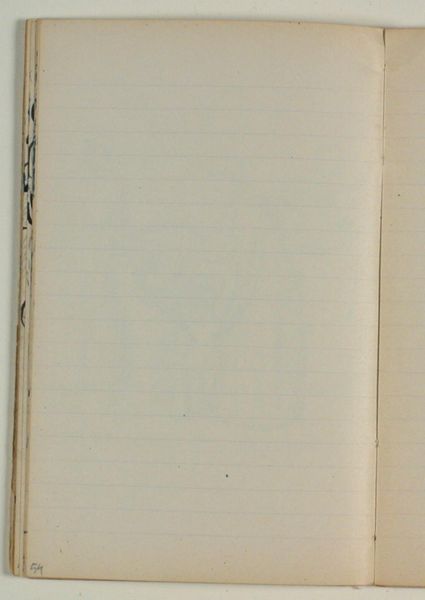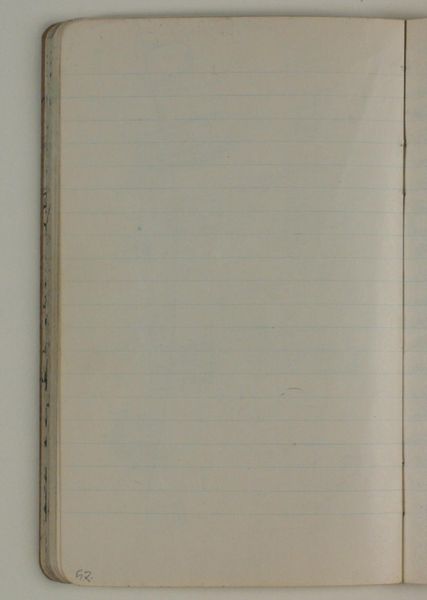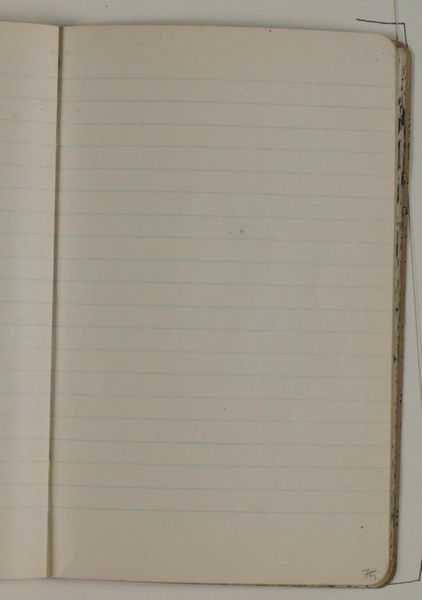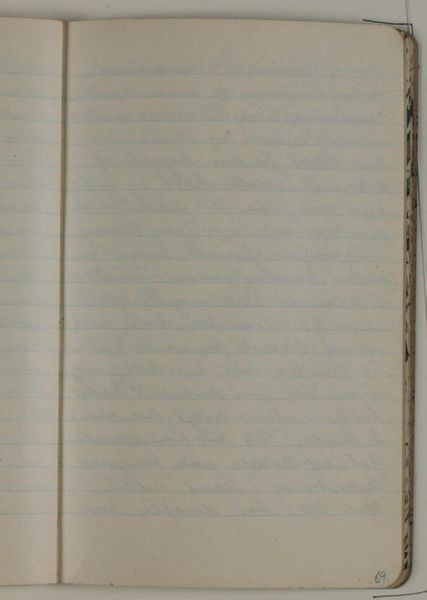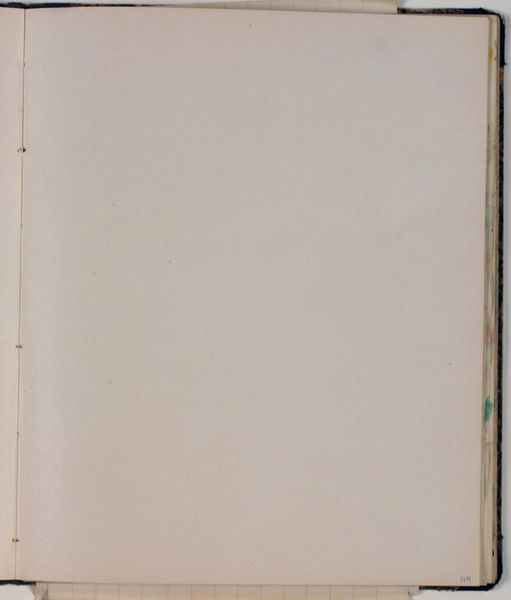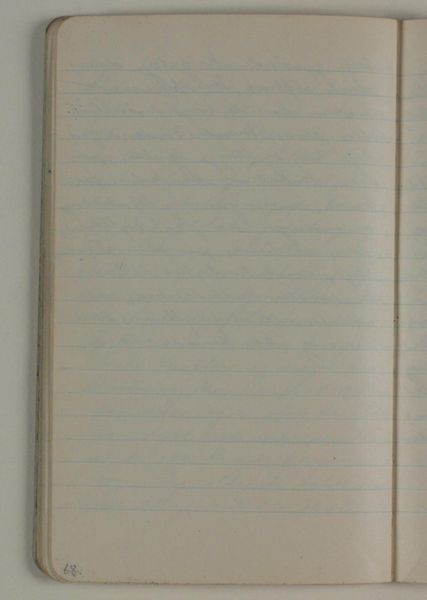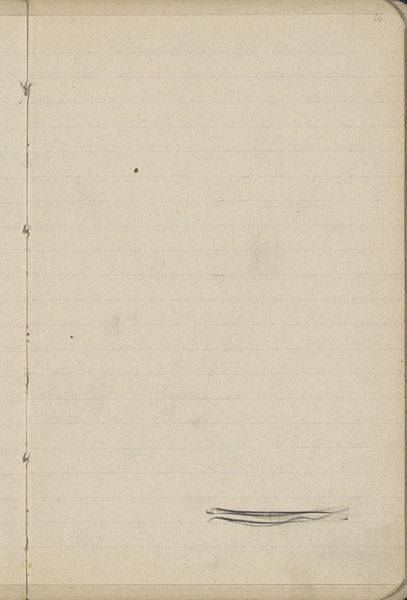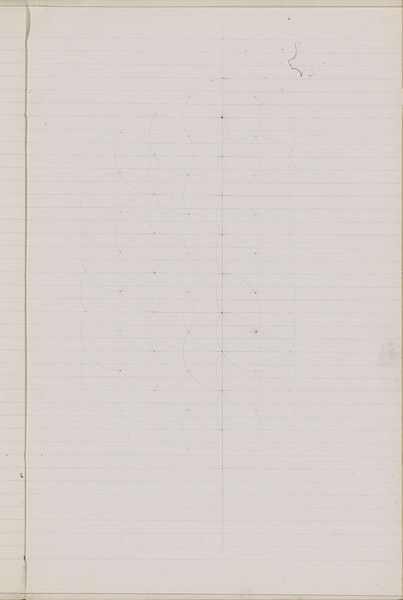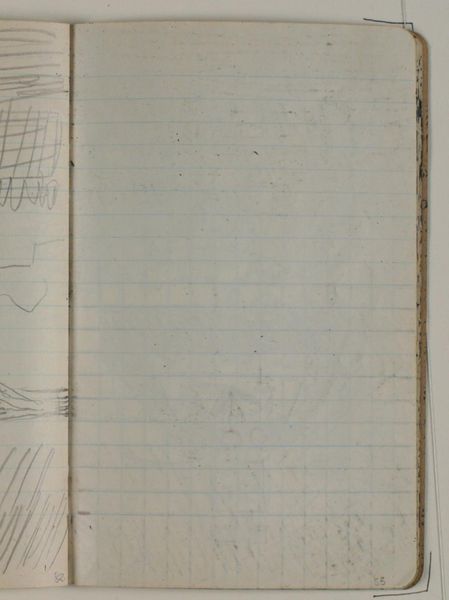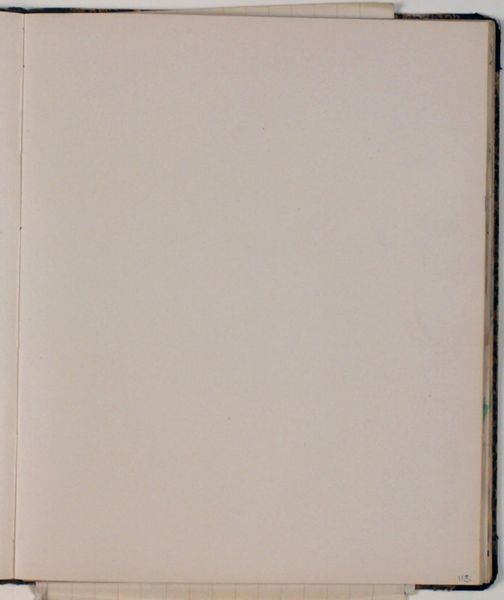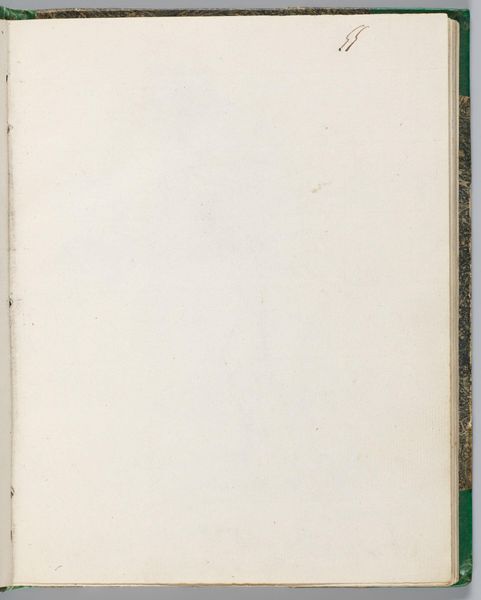
drawing, coloured-pencil, paper
#
drawing
#
coloured-pencil
#
water colours
#
paper
#
coloured pencil
Dimensions: 178 mm (height) x 111 mm (width) x 5 mm (depth) (monteringsmaal), 178 mm (height) x 111 mm (width) (bladmaal)
Curator: Welcome. Here we have "Blank," a work on paper employing coloured pencil by Niels Larsen Stevns, created sometime between 1937 and 1938. It resides here at the SMK, the Statens Museum for Kunst. Editor: Initially, I’m struck by the stark horizontality. The ruled lines stretching across the page suggest constraint, a regimented space. There’s also something hauntingly unresolved about the blankness itself. Curator: The blankness could be powerfully symbolic. Think of it as an empty slate—tabula rasa. Niels Larsen Stevns, a committed religious painter, might be inviting contemplation of creation, potentiality, the divine spark before it manifests. Editor: Yes, it's easy to impose ideas onto a blank slate. I am more struck by the physical qualities; the delicate, thin lines, and the slight yellowing of the paper, pointing towards the fragility of both time and artistic intention. Even its openness is specific: an off-white shade that establishes a horizon and direction to view the sheet. Curator: I see your point. There is something in the texture and hue that speaks of its vintage quality. Consider the cultural context; the shadow of looming conflict in Europe. The blankness could be seen as an indictment of those turbulent times, an expression of uncertainty and lack of direction. Editor: Or perhaps, a challenge? Maybe the artist meant this less as a representation of turmoil, and more of a self-initiated obstacle, a test for the interpreter? To meet "nothing" face on. It speaks to me more as a beginning, a step. The notebook invites this: there are other pages... Curator: Stevns frequently explored biblical and mythological themes, so interpreting it in this grand way certainly does have validity. Yet, in its ambiguity, the "nothing" we are seeing feels deliberately open to interpretation—both formally and culturally. Editor: A fruitful, yet almost infuriating dance between form and meaning. Still, it’s the tangible elements - the lines, the aging paper – that root its potential narratives in the real world, isn't it? Curator: I agree. The enduring power of art lies in that connection – in finding personal meaning and engaging our cultural memory.
Comments
No comments
Be the first to comment and join the conversation on the ultimate creative platform.
